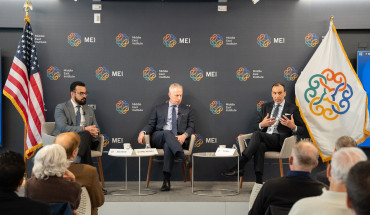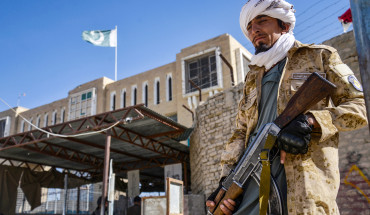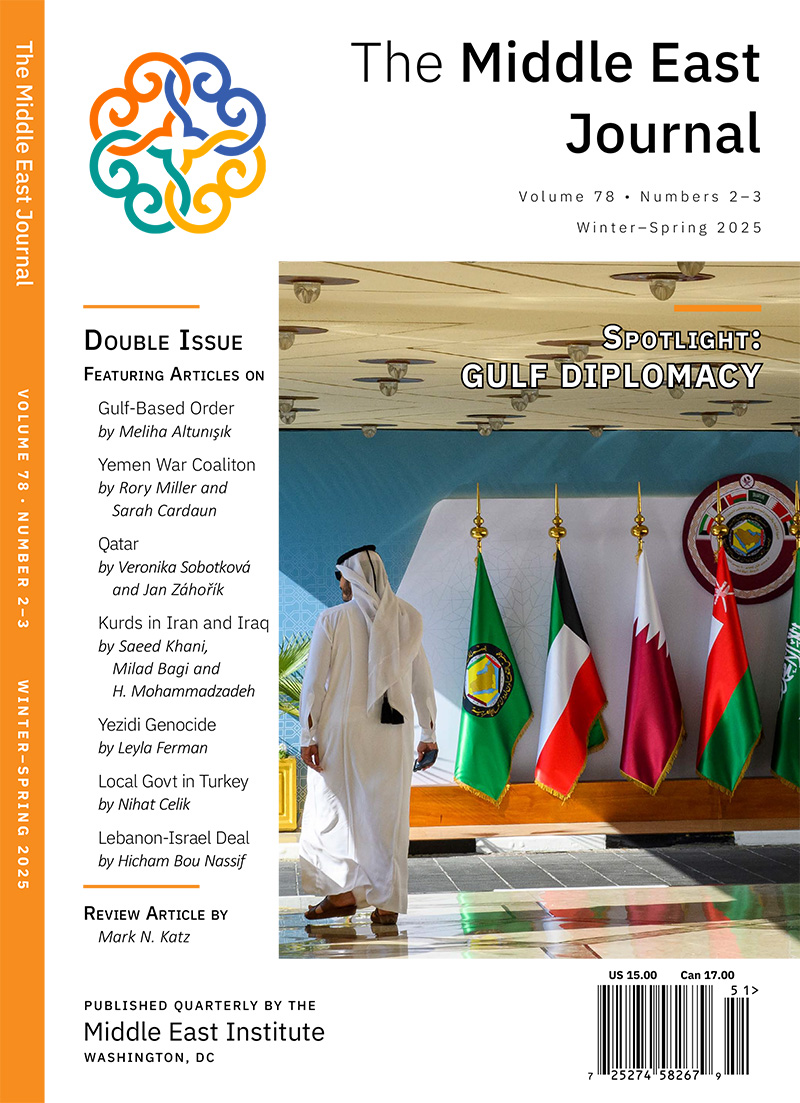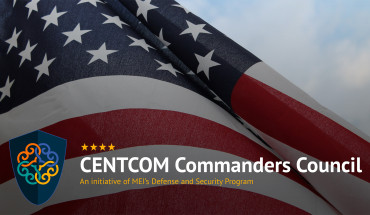President Donald Trump confirmed this week that he plans to travel to Saudi Arabia and other Middle East countries later this spring. This visit will bring the region into sharper focus at a time when Trump’s priorities have focused closer to home and on his unique brand of economic warfare.
The confirmation of this trip also comes at a time when tensions are ratcheting up in the Middle East, with the United States sending more ships and warplanes to the region as Trump threatened Iran with attacks and initiated a military campaign against the Houthis in Yemen and Israel stepped up its military strikes in the Gaza Strip and Lebanon. These increasingly contentious regional dynamics coincide with Trump’s accelerated global economic warfare against friends and foes alike, just as his peacemaking efforts with Russia and Ukraine are getting stuck in the mud.
A rapidly deteriorating security situation in the Middle East along with increased uncertainty in the broader geopolitical landscape do not seem like propitious conditions for a successful diplomatic visit by the US president, but a lot can happen between now and when this trip might occur.
Five key issues to monitor in advance of Trump’s planned Middle East visit
When he took office earlier this year, Trump faced a Middle East landscape that was dramatically different from the one he left behind in 2021, as Middle East Institute experts noted at the end of 2024. The two biggest shifts in the landscape were the return to major war between Israel and some of its neighbors and a diminished but still present threat from Iran and its so-called Axis of Resistance.
Ahead of Trump’s planned visit, it remains uncertain whether the region will take steps toward greater stability on these two key fronts, Arab-Israeli relations and Iran; but in the meantime, various transregional and global issues are sure to further impact Middle East dynamics. Here are five key issues to monitor in the weeks before the president’s potential trip.
1. War or peace on the Arab-Israel front? Trump’s aspiration to be a peacemaker and unifier, and his reported desire to win a Nobel Peace Prize, shape his approach to the Middle East, in addition to his faltering efforts to win a quick and cheap peace in the Ukraine war. Trump entered office with tenuous cease-fires in place between Israel, Hamas, and Hezbollah — the one in Gaza has fully collapsed, and the one with Lebanon is hanging on by a thread.
In Riyadh, Trump will hear a consistent line from Saudi leaders about the need for a clear pathway to a two-state solution on the Israeli-Palestinian front, a view widely shared across the Arab world but not in alignment with the mindset of the current Israeli government. The gap between Israel and America’s close Arab partners has not narrowed in the months since Trump entered office, and his goal of brokering a Saudi-Israel normalization deal is not currently backed up by any clear strategy to narrow the divide or prevent conflicts from further escalating.
2. War or diplomacy with Iran? The Trump administration has returned to its tactics of “maximum pressure” on Iran, with both Washington and Tehran continuing to send mixed signals about whether there is a deal to be had or whether a wider conflict might occur. Just as there is a gap between the current Israeli government and the consensus view among America’s Arab partners on Palestine, there is a major divide between these two camps on Iran. Most long-standing US partners in the Gulf seek a de-escalation with Tehran, representing a significant shift in stance by some key countries compared to a decade ago; but the Israeli government may be gearing up for more attacks against Iran’s regional network, possibly as a prelude to a wider direct strike on Iran and its nuclear program.
It seems unlikely that Trump would risk a major Middle East trip without greater clarity on these two main issues, the Arab-Israeli front and Iran, but Trump is the least predictable president the United States has ever had. Whether he will pursue some form of talks or take military action against Iran in coordination with Israel is a second key question for the coming weeks.
3. Persistent threats from terrorist networks. A third issue to monitor in the run-up to a potential trip is the prevalence of chronic and persistent threats from terrorist groups like the Islamic State and al-Qaeda affiliates, including al-Qaeda in the Arabian Peninsula, as recent threat assessments by the US intelligence community and the Center for Strategic and International Studies have highlighted. These groups have not dominated the news cycle in America of late, but their possible actions in advance of a US presidential visit could shape the regional landscape in unexpected ways.
4. Economic, technology, and energy ties with the region. The Trump administration seems keenly interested in boosting economic and energy ties with important Middle East allies like Saudi Arabia and the United Arab Emirates, as highlighted in recent meetings and announcements involving those two countries. A wildcard to watch for is what effect Trump’s global economic policies, including his stepped-up trade wars, might have on relations with key Middle East partners on economic, technology, and energy policy.
5. The Middle East as a central front in broader geopolitical competition. The fifth area to watch closely in the near term is how the broader relations between the United States, Russia, and China develop and what impact this might have on the Middle East. Trump’s opening months in office included a gambit to smooth ties with Russia and step up competition with China, but both countries have their own approaches and relationships with the Middle East. Russia strongly criticized Trump’s threats against Iran this week, and China continues apace with its long game of building ties across the region.
In this complicated landscape, the United States has important opportunities to produce pathways to peace and stability in the Middle East on both the Arab-Israeli and Iran fronts, even as the region continues to face the risks of expansion of existing conflicts and persistent threats from terrorist networks. But to seize these opportunities, the Trump administration needs a clearer strategy to address the concerns key regional partners have about the unresolved Israeli-Palestinian conflict, including a live war in Gaza that risks displacing millions, and the potential of a bigger conflict with Iran. The United States also has an opportunity to boost economic ties with key regional powers, but it remains to be seen whether Trump’s broader global economic policies will smooth or complicate efforts to seize it.
Announcing a presidential visit to the Middle East should set into motion a series of coordinated policy efforts on multiple fronts to ensure that progress is made before and during the trip. But with a US president who prides himself on unpredictability and given this time of great uncertainty, it is fair to ask the question: will this trip even occur?
Brian Katulis is a Senior Fellow at MEI.
Photo by Andrew Harnik/Getty Images
The Middle East Institute (MEI) is an independent, non-partisan, non-for-profit, educational organization. It does not engage in advocacy and its scholars’ opinions are their own. MEI welcomes financial donations, but retains sole editorial control over its work and its publications reflect only the authors’ views. For a listing of MEI donors, please click here.













